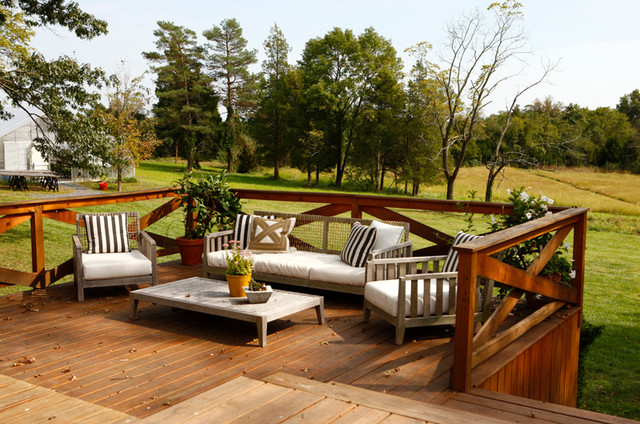
Seasonal Care and Maintenance for Your Decking in London
 Decking installation in London properties has been gaining enormous popularity lately and this is certainly not without a reason. Unlike a patio, it doesn’t require hard landscaping or the use of materials such as stone or cement; yet it can make the perfect quiet relaxation spot, a sitting area, a place for BBQ, al fresco dining, and entertaining. What’s best, its usage is not limited to properties with gardens only. Due to its light construction, it can be installed in roof terraces, balconies, and as extension to living areas.
Decking installation in London properties has been gaining enormous popularity lately and this is certainly not without a reason. Unlike a patio, it doesn’t require hard landscaping or the use of materials such as stone or cement; yet it can make the perfect quiet relaxation spot, a sitting area, a place for BBQ, al fresco dining, and entertaining. What’s best, its usage is not limited to properties with gardens only. Due to its light construction, it can be installed in roof terraces, balconies, and as extension to living areas.
With its clean-cut lines and natural look, a decking brings understated elegance to modern homes; softens the lines of more traditional properties, and even works great with sloped gardens. Levelling the base for decking installation is much easier than levelling a patio base. Its most popular shapes are square and rectangle but you can also experiment with circles, triangles, or trapezoids or even design your own decking to complement your home’s architecture. And for a truly unique look, you can also choose a colour that will make your London decking stand out. be it the natural colour of the wood, white for a Mediterranean feel, or a shade of grey, green, or taupe that will blend well with almost any garden.
After you’ve chosen the perfect decking style to suit your needs, you will also need to consider the maintenance, so that your charming wooden oasis will look its best season after season.
Keep a Close Eye on Your London Decking
Even treated wood is not entirely impervious towards the elements. Water, humidity and sun exposure will affect your decking in a different way than they affect other wooden surfaces, such as walls or fences, causing a lot of damage even to a sturdy wood in just one season. Water stays on the flat surface of the decking longer, and with no shade or other overhead protection, sunlight can have a very detrimental effect on the wooden surface as well. Heavy traffic, moisture from plant holders, and restricted air circulation from furniture or other objects can also make your decking appear dingy in just one summer. And come autumn, piled dead leaves can lead to mildew growth and pest infestations. Other factors that will affect the appearance of your decking are dust, dirt, and bird droppings; while cracked boards, nails coming out from the floorboards, wobbly railings, and loose stairs can pose a serious risk of injury. That’s why, you need to keep a close eye on how your decking is ageing; take care of repairs and seasonal maintenance promptly.
Provide Regular Maintenance
Some very simple things can help you keep your wood decking looking good longer.
- Take the time to sweep your deck on a regular basis. Be extremely careful that there’s no accumulation of dead, especially wet leaves.
- Clear weeds and debris from the gaps between the floorboards regularly.
- Clear spots and bird droppings upon noticing them to prevent permanent staining and discolouration.
- Keep surrounding vegetation under control – prune hedges and shrubs to prevent them from growing within a couple of feet of your decking.
- Move planters regularly if they’re not positioned in a way that allows proper airflow underneath them.
Like other hardfloors, a decking will also suffer the consequences of foot and pet traffic. It is vulnerable to scuff marks, scratches from high heels, and dog nail scratches. That’s why, it is highly recommended that you lift chairs and other furnishings before moving them, keep your pets’ nails trimmed, and basically ensure the same amount of care for your decking as you do for any other section of flooring in your home.
Protect Your Decking from London Weather
To ensure the best protection for your decking and prevent it from deteriorating quickly, apply a decking preservative. Use this even on pressure treated wood – although it is resistant to rotting and pest infestations. Floorboards can still crack and split from water exposure. You can find a variety of sealers and paints on the market especially formulated for use on decking. They can achieve a very different look; but overall their main function is to protect a wood or composite decking from moisture damage, mildew growth and sunlight. Some formulas can also act as fire retardants.
One thing you should consider when choosing decking protection products. Their protective properties fade over time and you will have to reapply them at one point, sooner or later. Although in general the more expensive the product, the longer its protection will last. There is really no such thing as lifetime protection for a wood decking. Reapply a wood sealer on a regular basis; best in autumn on a mild day when the temperature is stable and weather forecast doesn’t predict rain for the week to come. As highly unlikely as it may sound for London. Once a year should suffice and there are now new formulas that may last up to three or four years.


